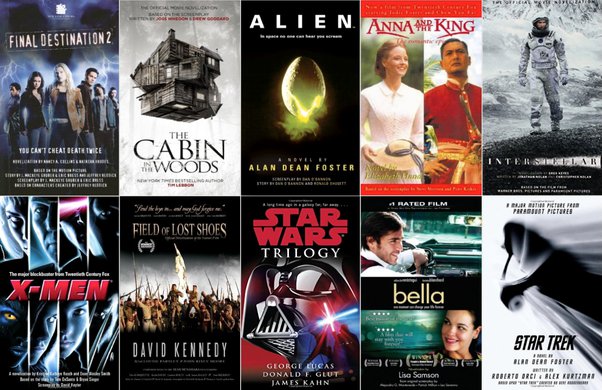Conspiracy and cover-up are a dozen dozen in fictional films (thriller, political drama, you name it). But when a documentary highlights a conspiracy, it can take the kind of folded suspense that used to use films and rarely. (The successor of conspiracy cinema, “all the men’s men” and “chinatown” and “The conversation” and “The Lengling Views” had about 10,000 conspiracy films in the era of the 70s.)
,The stringer“There is a documentary mystery about a deadly serious theme: the true writer of the famous Vietnam war picture was taken on 8 June 1972, which is in the city of Town of Tronag Bang, which showed after a Neplam attack-one A 9 -year -old child is a girl named Fan Thiem Fuko, towards the camera, her arms go out like a broken wings, her mouth was open in the scream of pain (she was burnt in the whole body (shot four other children. Shows, dressed and walking with her), and the picture, the moment it came out in the world and was seen by the Arabs, “as known as”Neplum girl“It is one of the most prestigious and destructive images of war terror.
“Naplam Girl” is identified as a picture of infallible historical importance, which had a profound impact on people’s feelings about the Vietnam war. (It is commonly said that the photo helped to end the war; I would say that this is some overstatement.) But who took the photo? After shooting in the morning, when it was sent out of the sigon office of the Associated Press, it was credited to 21 -year -old Vietnamese photographer Nick út, who was the local staff photographer of AP. Almost overnight, the picture changed his life. From that moment, he was observed to take one of the most prestigious images of the 20th century.
But “The Stringer” directed by Baao Guayen (“The Greatest Night in Pop”), and the executive manufactured by Gary Knight, who traveled for a two -year search, which is about the film (Night, Tall and Courtley and British , In white hair with a veg, serves as his on-camera guide and interviewer), claims that Nick was Nick. No Who took the photo. Út was there that day, with other film Cameramen and photographers, on that desolate strip of the road in Trảng Bàng. But the documentary claims that photograph was taken by a freelance photographer Guayen Than Neghe, who contributed to AP. He was also there that day.
What happened to the film is relatively simple. It said that AP Photo Editor Horst FAAS knew that Neghe had taken the photo in Saygon, but after paying the standard $ 20 for it, the FAAS ordered the shot to give credit to Nick út, as he wanted That it is an AP staff picture. According to the film, such a thing was all the time and it was not considered a big thing; It was a system of “gentle” exploitation. But with a picture of this power and magnitude, it proved to be important again (if this has happened).
It is my job to say that I think a film is good or not, and let me say that “The Stringer” is a very good film: Rap, Tatkal, absorbed. But in this case it is not so easy. The entire film revolves around a binary question: did Nick take that photo? Or what did Guayen Thanh Neh do? And the film’s evaluation in any meaningful way without recognizing its central thesis, which is essentially a conspiracy principle: credits were stolen for the photo, and all this has been covered for 50 years. If this happens, it would be a scam, a tragedy, perhaps a crime.
Gary Knight, a photographer himself, leads the investigation, but the important figure of the film is Carl Robinson, which was the AP photo editor at that time. Robinson, now in his eighties, says that he was the one who swaps in the name of a photographer after his boss, horst fas, or ordered him to do so. And he claims that he was sitting for 50 years on this mystery, a silent square crime.
Why did he not say anything before? This meant that the boat would have to rock for the tenth power; Bouncing a grenade in the midst of a sensitive cultural heritage; To disrupt the lives of all those who lied about it; And beyond this, he must go against AP, a news organization that is fiercely protective for its own legacy. The AP investigated its six months in the case, including seven witnesses interviews, and the conclusion is that there was no conspiracy, no swapped photo credits-which was Nick, in fact, photographer. AP is Has raised big objections For “The Stringer”, and Nick út has threatened to take legal action against filmmakers.
For some time, I saw “The Stringer” with my guard up, suspected its claim. In the part, because the film, “Oh, let’s examine this question,” instead of taking the attitude of “, the photo credit operates out of the box that the photo credit was stolen. The film collects the evidence because it goes along, but it seems that it has already made up its mind. And it put me on alert. At the same time, I told my story of Carl Robinson (order is being ordered to prove the photo credit wrong), and not only stops the story as reassuring, but there is a question behind it: his inspiration What will be a lie about this? The story that he is telling it makes him feel bad. Fox Butterworth, The Failed New York Times reporter (who thinks that the thesis of the film is untrue) has said that he feels that Robinson is lying out of an anemia towards his old employer, AP, which he attended in 1978 Was. but it seems. Like quite stretch. You create this story Now47 years later, everyone has to avenge the working organization decades ago?
Nick út refused to interview by filmmakers (what may be indicated), and most of the “The Stringer” is dedicated to his attempt to find out the identity of the “other” photographer. At the beginning of the film, they do not know who he is, or even if he is dead or alive. “The Stringer” becomes a detective story. Carl Robinson’s wife, who is Vietnamese, claims that 50 years ago it was an open secret among the Vietnamese photographers that a photo credit was stolen on “Neeplam Girl”. And when the name of Guayin Thanh Naghe finally becomes bubbles on the surface, we start feeling some catarsis triggered by a suspense drama. Filmmaker tracks NGHE in California, where he lives for decades, and he fills in his biography. Finally, Gary Knight sits with her, and we hear its version of events.
The memories of NGHE do not give any decisive evidence. Nevertheless, as the audience, we take him to a person of gentle force in the early 90s, with a wind of bright honesty, his faculty is too much intact, insisting with calm confidence that Yes, he was the one who took the picture, and yes, it was taken away from him. Once again, we ask ourselves: If this is not the truth, then why would this old man lie? He does not wish for dispute or glory. Why would his version of events with Carl Robinson be so much? There is a description in the story of NGHE that is persecuting: he says that on the horrific day, on that frightening day, he gave him a copy of the photo he had taken, which Neghe took home then, and his wife with his wife Was upset that he destroyed it. Later, it can act as a proof of their author.
“The Stringer,” like any conspiracy thriller, we want us faithThis is part of the nature of such a film. Nevertheless, I am a condemnable skeptical to take such a dramatic impulse. Seeing such a documentary, what we want, eventually, is not the feeling, or even a very much logical logic. What we want is evidence. We want this to be a challenging photographic deformation evidence as citizens watching a film. And in a strange way we want it as filmmakers, who have been sentenced to half a century of conspiracy to expect a landscape in a smoking gun.
Guess? I would say that “The Stringer” comes close to being one. On the half way of the film, we see all the major pictures that were taken along the road in the trag Bang in those terrible minutes, bombing (mistakenly) by South Vietnamese Air Reders after the area of the village just behind it. (This is correct, “Naplam Girl” This attack is that a record is a “friendly fire” incident, and did not include American forces.) 8 x 10 photos are gathered on a table, and for the moment you think back to think back The sequence in Brian de Palma’s “Blow Out” where the sound man played by John Travolta still collects a group of photos for a raw 20 second-time footage in footage lasting 20 seconds-long time, Such as Zaproor’s film. (Apropos of nothing, I have always found the scene I check out of the “Blow Out”-a film that I dislike intensely. Because it is how admirable that a mainstream magazine is from far away , Publishes Stills from a Zapruder-type film. Sufficient Stills that you can actually make a short film of them?)
As it turns out, however, the photo-on-the-table sequence in “The Stringer” is only pleasing. Filmmakes hand over a group of forensic experts in Paris to all the materials that make a carefully computer-based analysis, including satellite images, the figures of which were standing properly and when those important few minutes of minutes During Trảng Bang. On the climax of the film, they present their analysis, and it is actually like combing through the Japruder film, looking for the important visual details that will suddenly bring to notice the hidden reality.
We are seeing what has happened – Kim Fuko is running on the road (which we also see in the color footage filmed). We are seeing shots of photographers who were there. And we are looking at the pictures that they took. All this is to track in a spatial-temporal manner.
What analysis has finally revealed is a figure, which is standing far away, perhaps 60 feet below the road from Kim Fuko – in other words, “Naplm Girl” is far away to take photos. The forensic team claims that the figure is Nikk. Then we were shown many pictures that the figure was in an accurate position. And here is the kicker: AP photos were given to those pictures which were credited to Nick út. He took them. Which states that when it comes to “Neplam Girl”, it could not be at the right place at the right time. “The Stringer” is a powerful human story of the challenging cultural resonance. But like the scenarios of all conspiracy, what it is, it is the cleanliness attraction of reality that is bare. This is worthy of seeing – for those important truths that are in it, and for its sheer drug addiction.



